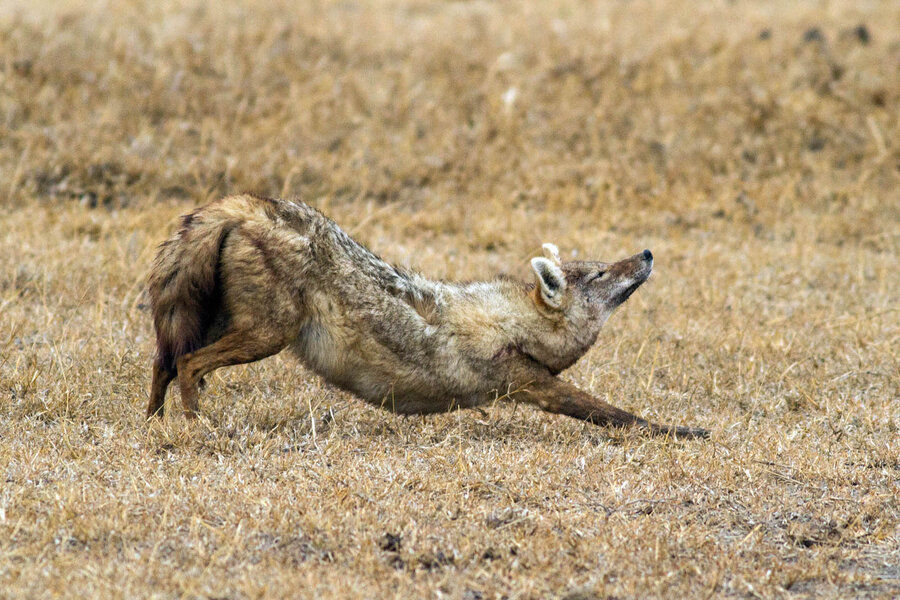How climate change drove evolution of dogs
Loading...
When scientists examine the impact of climate change on the evolution of mammals, they generally look to herbivores, says Borja Figueirido, an ecology and geology expert at Spain's Universidad de Málaga.
He and his colleagues took a different tack, examining the joint structures of canids, the family of animals that includes dogs, wolves, and foxes, for evidence of evolutionary adaptations to changes in climate. They found climatic shifts appeared to have prompted canids to alter their hunting practices.
To determine whether there was a correlation between the evolution of canids and the overall cooling in climate, researchers examined fossils of both living and extinct canids from over the past 37 million years.
“The spread of open grassy habitats and the evolution of long-legged herbivorous mammals with high-crowned cheek teeth have been viewed as an example of coevolution,” wrote the authors. “Previous studies indicate that specialized predatory techniques in carnivores do not correlate with the spread of open habitats in North America. Here we analyze new data.”
The researchers set out to explore how the shifting of habitats to include wider grasslands in North America may have forced canids to change their predatory practices. Most cat species, such as tigers, are still known as “ambush predators,” meaning they use their forelimbs and elbows to wrestle with prey, the authors note. Canids, however, tend to chase their prey over long distances. As the press release notes:
Pounce pursuit predators, who sprint after smaller prey, began to appear approximately 7 million years ago. True pursuit and endurance canids such as wolves, which chase prey over long distances, appeared later with the cooler and more arid conditions of the Pleistocene (2 million years ago).
Analysis of canid fossils – particularly elbow joints – suggests that dogs and their predecessors have changed the way they hunt over time. Scientists who examined the fossils of the earliest-living dogs, which dated back to the Oligocene – a period stretching back 23 million to 33.9 million years – concluded they were also ambush predators.
“We selected the shape of the elbow because it is an established anatomical indicator of locomotor/predatory behaviour in living carnivores, as it reflects the relative range of forearm motion,” Professor Figueirido told Forbes.
“More recent fossils show what seems to be a different predation adaptation,” reported Forbes. “Their forelimbs are stiffer and don’t move around as much, so they are not good for grappling, but they are good for short (pounce-pursuit) and long-distance sprinting to capture prey.”
The researchers published their findings on Tuesday in the journal Nature Communications.






